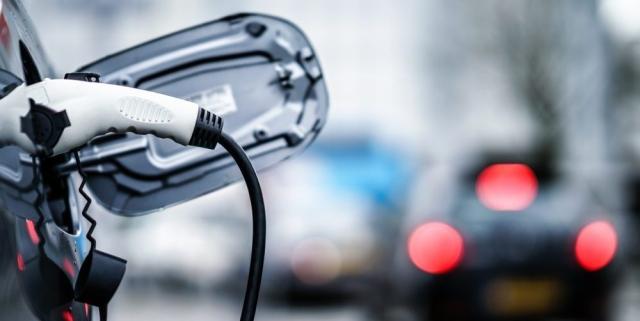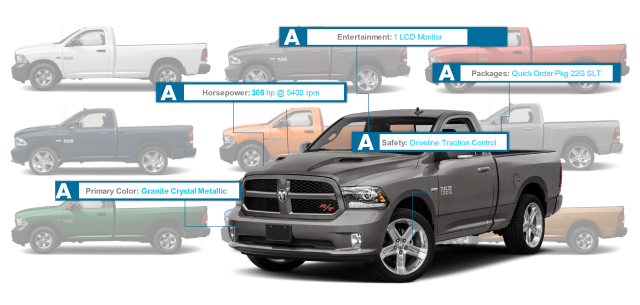The Path From Gasoline To Electric Vehicles Will Require A Bridge
The question isn’t if passenger electric vehicles (EVs) will replace those with traditional internal combustion engines, it’s when.
It varies by who’s doing the talking, but even oil giants continue to increase their EV fleet size forecasts. BP expects there to be around 300 million passenger EVs on the road by 2040. Research companies like BloombergNEF continue to hold more aggressive views on EV adoption with a prediction of 508 million on the road globally by 2040.1 And we’re starting to get there – EVs surpassed the milestone of 1 million on the road in November 2018.
The year 2040 seems to be a long way off, but one can wonder how much sooner we could reach 300+ million electric vehicles on the road if there were more EV options today with affordable price points and expanded accessibility to charging. Regardless of exactly when the fully electric vehicle becomes the mainstay of the highway, the automotive industry has some work to do before we get there.
Industry Disruptors
When it comes to breaking the mold of how vehicles are sold and what they are powered by, Tesla comes to mind, more times than not. The company offered something totally unique – a long-range electric vehicle loaded with technology like a large touch screen that every OEM is mimicking in some fashion today, industry-leading semi-autonomous capabilities and “ludicrous” performance, to name a few. Furthermore, Tesla has appealed to the way consumers prefer to shop today (online and turnkey). The company has pushed consumer interest in EVs which has in turn pushed OEMs, especially in the US, to fully embrace electrification.
However, Tesla isn’t the only auto manufacturer to disrupt an industry that has historically been impossible to disrupt. Companies such as BYD, a Chinese automaker and battery manufacturer, has been disrupting the tried-and-true combustion engine overseas for over a decade. BYD has been focused on battery technology and EVs so much so that Toyota has recently partnered with them for their EV initiatives. BYD produces more EVs than anyone and has big plans of expanding their product offerings globally.2 In fact, the expansion has already hit the U.S., powering fleet electric buses and trucks in California.
Electrification has definitely become a focus. It has been glamorized by Tesla. Companies like BYD are rolling out EVs and batteries at volume with aspirations to go global. This is all coupled with OEMs embracing EVs with currently 13 EV models available today (not counting Tesla). So why are gasoline and diesel vehicles not even close to being edged out by EVs?
Why Aren’t We There Yet?
Too Expensive
EVs have been a challenge for OEMs in the area of profitability. They make more of a profit on combustion engine vehicles, because they develop and build their own engines in house. Whereas with EVs, batteries are outsourced.
A Tesla Model 3 base model might list at $35,000, but by the time you option one with enough range to compete credibly with a “regular” car, you are well over $50K. For EVs to gain a larger market share, they will have to cost the same, and basically perform the same, as a car powered by gasoline. A whole new battery technology will be required along with faster charging stations as readily available as gas stations to make that final leap.
Charging
Charging infrastructure remains a pain point for the passenger EV. Currently, there are 630,000 public charging points installed globally, and utilities, oil and gas companies, automakers and pure-play operators are currently all active in this area.3 While 630,000 charging stations may seem like a lot when comparing that the 150,000 gas stations in the U.S., many more are needed to serve the growing EV fleet. To accurately compare the two, you must consider how many pumps per gas station, the availability of gas stations and how quickly gas tanks are filled vs. battery charged. With all that said, motorists currently have much higher accessibility to gas.
For EVs to be competitive with internal combustion vehicles, consumers will need access to home and/or workplace charging. Buyers with access to home charging will adopt EVs at a much faster rate than those without.
Limited Options
We have more electric vehicle options today than we’ve had since the first EV hit the market, but the choices are still slim when compared to traditional vehicles powered by gasoline and diesel.
Buyers have basically had two types of EV choices: a number of high-end, long-range EVs and few affordable ones that suffered from short ranges and a lack of amenities. Many still don’t offer enough range to be practical, and several are only available in select markets. Family size also comes into play. Less-expensive, longer-range EVs are becoming more available in the market, but they are too small to accommodate 3 to 5 occupants plus cargo, especially for long stretches of driving.
Towing and Hauling
There is still a large population of people who tow and haul for both recreation and work today. Although Tesla has once again shown us that EVs can perform these tasks with the introduction of the Cybertruck boasting a max range of 500 miles and max towing capacity of 14,000 lbs. Tesla is not alone. Startups like Rivian have equally impressive capabilities with a max range of 400+ miles and max towing capacity of 11,000 lbs. However, EVs can’t totally satisfy your towing needs.
For example, camping in a remote location with your travel trailer means no electricity to recharge. So, while you can get there, you may not make it back to a charging station to recharge. When towing anything larger than a compact trailer, miles per gallon are cut in half. The same holds true for EVs, where range is cut in at least half. Imagine a trip from Los Angeles to Moab, where you go through long stretches that barely have gas stations, let alone charging stations. So, until the battery technology further advances (which it will, we’re so close) and every gas station offers charging stations, most recreational towing needs to be done the “old way” with gasoline.
The same holds true for many work-related towing needs where heavy trailers exceed 12,000 lbs., but not quite requiring a semi, need a heavy-duty pickup truck to tow these heavy trailers long distances. We even see this with large Fifth Wheel RV trailers, which can’t be towed with anything smaller than a heavy-duty pickup configured for max towing.
Plug-in Hybrid Electric Vehicles
It is safe to say that EVs won’t be displacing combustion engines overnight, however we know consumer interest in EVs is progressively increasing as are OEM EV roadmaps. Additionally, we know the EPA’s fuel standards, regardless of fluctuations, will increase passenger car and light truck miles per gallon requirements over time. This is all coupled with increasing demands for SUVs and trucks from car shoppers.
All that said, there has to be an interim step to move us closer to embracing electricity and ditching gasoline. Plug-in hybrid electric vehicles (PHEVs) will be the bridge between them. While more expensive than standard engine-only vehicles, there are several notable advantages that can justify the added cost.
There are two types of hybrid vehicles, and both use a combination of electricity and gasoline. The difference is that the original hybrid cannot be plugged in to recharge the battery, so the battery is only recharged through alternative means like regenerative braking.
This makes the PHEV the much more flexible option. Regenerative braking is still implemented, but if a driver doesn’t want to wait for a recharge, they can plug it in at home or at a charging station. Today’s PHEVs have an average battery-only range of 20 miles. This extra “juice” allows non-compact vehicles to achieve impressive MPGs, allowing you to go longer distances between fill-ups with absolutely no range anxiety.
And of course, the PHEV is not just beneficial to its owner’s wallet. Reducing our dependency on fossil fuels and producing less CO2 emissions may be a game changer for the environment as well.
OEMs see this as a viable path to electrification as we’re seeing more PHEV options than ever before. OEMs such as Ford and Volvo, who already have PHEV offerings today, have aggressive plans to introduce a lot more. They are not the only ones. There are almost two dozen PHEV models offered today in the U.S. with more on the horizon starting with 2020 models.
Moving forward, the PHEV will allow more and more car shoppers to have the best of both worlds – larger vehicles and great gas mileage with zero range anxiety – until the day all issues surrounding the fully-electric vehicle can be solved.
About the Author
Charlie Schiavone is the Product Portfolio VP at Autodata Solutions. With a career focused on a combination of core vehicle data and product development specifically for the online automotive user experience, Charlie not only understands the strength of data-driven applications but also is able to implement them. Charlie has held a number of responsibilities at Edmunds, Total Car Score, Autobytel and AutoWeb.
Email: charlie.schiavone@autodatasolutions.com
Sources
1 Electric Vehicle Outlook 2019, BloomberNEF
2 The World’s Biggest Electric Vehicle Company Looks Nothing Like Tesla, Bloomberg Businessweek



